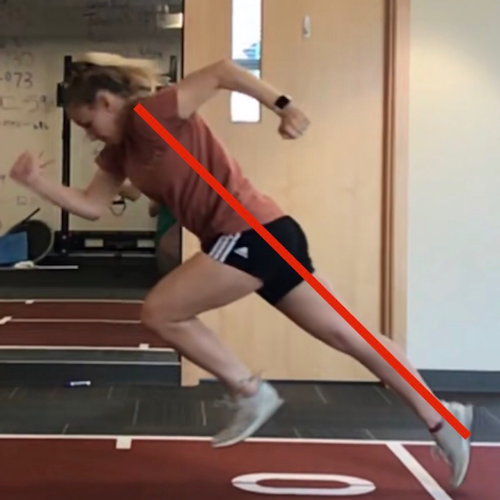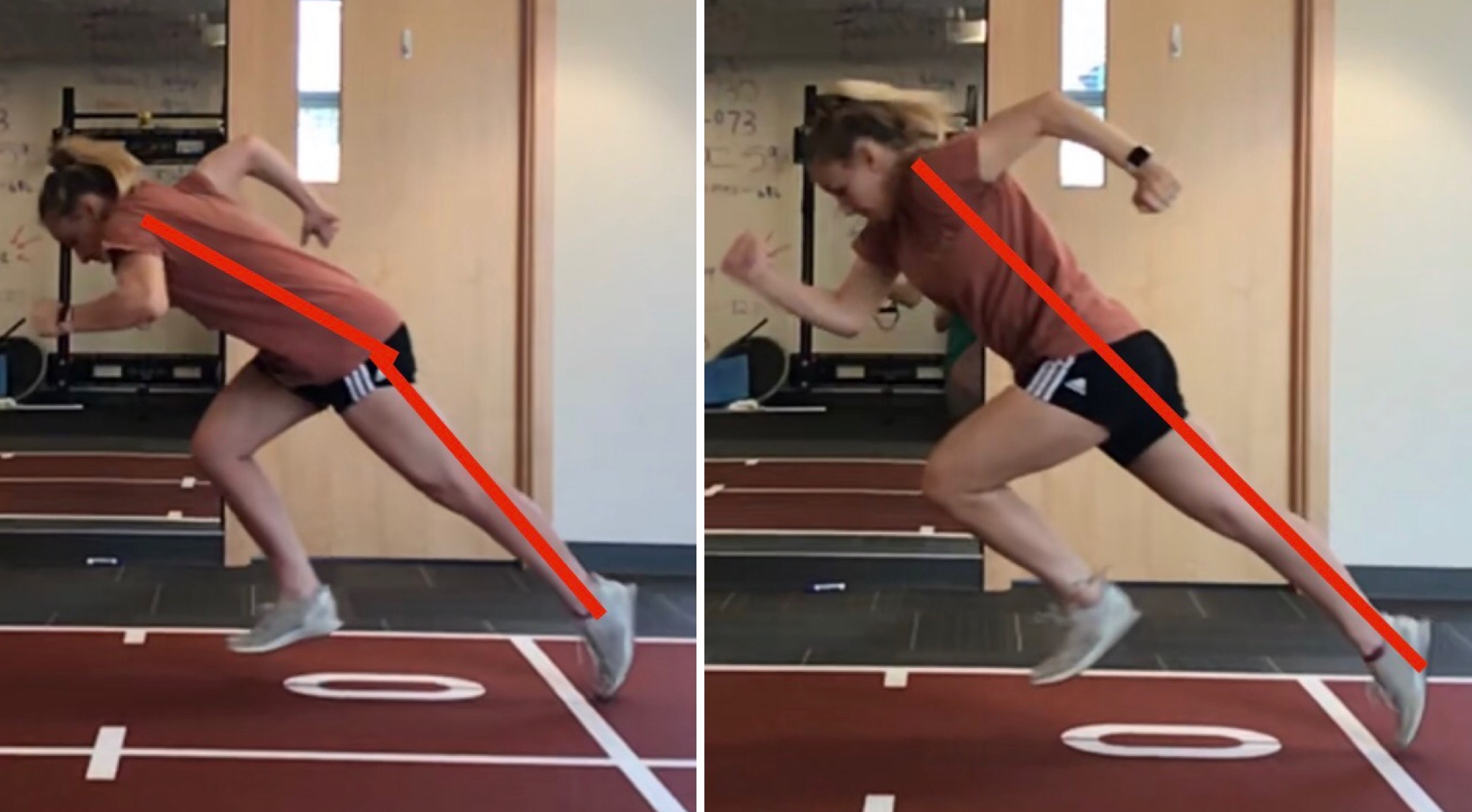Interested in getting faster? Click the button below to learn more about our speed camps.
An explosive first step is often what makes or breaks a play. Getting an edge on your opponent right away is much better than being behind and having to play catch up.
There are three keys to having an explosive start:
-
Projection angle
-
Shin angle
-
Pushing
Teaching these concepts is vital to athlete development. Athletes are fastest not only when they can execute the technique, but when they understand it as well.
That’s why I take time to teach concepts to athletes, not just have them run.
Athletes in attendance at our speed camps will learn these concepts and techniques, giving them both the knowledge and the physical ability to have an explosive start.
This post covers projection angle, the next two posts will cover shin angle and pushing.
Projection angle is the angle between your body and the ground when your foot leaves the ground. In reference to the first step of a sprint, it’s basically how far forward you are throwing your body.
You have to throw yourself forward—a steep projection angle—to maximize the speed you hit on your first step. If you’re standing straight up and just start running without changing your body angle, your first step won’t be nearly as fast as it could be.
Poor projection angles = slow starts. Great projection angles = explosive starts.
Further, poor projection angles impact more than just the start. To hit your true max speed, you have to start fast and gradually build speed. Think of it like rolling a ball down a hill. If you just let go of the ball at the top of the hill, it will start rolling slowly and it will pick up some speed. give it a decent push, it will start roll out faster than if you just let go, and it will reach a decent max speed. But if you push it hard, it will have the fastest starting speed AND it will reach the fastest top speed of all.
Sprinting is the same. With a bad start, you generally don’t hit the same top speeds that you would with a great start.
Avoiding Common Mistakes
1) Bending over at the waist
Many athletes want to bend at the waist, thinking that improves their projection angle.
On the contrary: athletes need a straight line from the ankle, through the knee, hip, shoulder, and preferably their ear to maximize first-step explosiveness.
The first picture on the left shows worse technique and a slower start. On the right, she fixed her technique and had a faster start.
Bending at the waist feels like you’re improving your angle, but you aren’t…you’re just bending over.
2) Projecting too far
Sometimes athletes project a little too far and wind up stumbling. That’s a good thing—at first—because it means they’ve found their limit.
Obviously, falling on your first step isn’t a good strategy.
But once athletes know “if I project that far, I fall” they can pull it back a little bit. That’s a better problem to have than not knowing how much you can handle because you’re afraid to push it a little.
3) Not projecting when accelerating out of a jog
In many sports, athletes are already moving and THEN they need to hit the jets. Think about a soccer player jogging downfield when the ball flies past her, then she decides to sprint after it.
Even if you’re already moving, you still need to project yourself forward to maximize your starting speed. Your projection angle will be slightly more upright if you’re transitioning from a jog to a sprint, but there should still be a visible change in your body lean.
Projecting hard is but one piece of the puzzle that is speed. An important piece, but just one piece.


